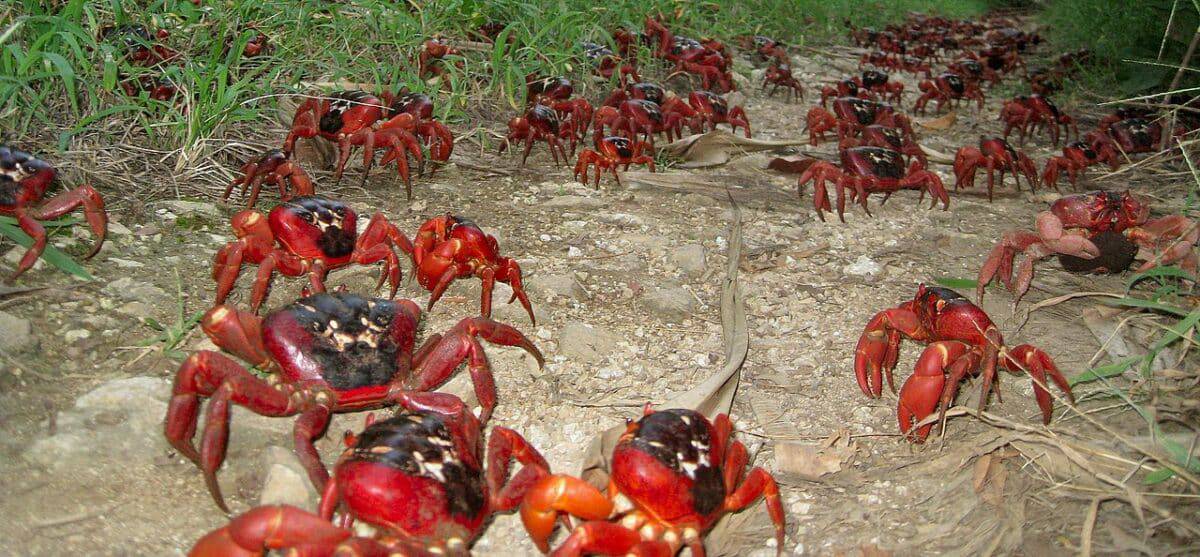Islands are typically known for their picturesque landscapes, diverse wildlife, and serene locales. However, few places can claim a curious peculiarity like Christmas Island, where crabs literally outnumber people. This unique ecological phenomenon offers a fascinating insight into the intricate balance of nature and the remarkable species that inhabit these environments.
Introduction to Christmas Island

Christmas Island, located in the Indian Ocean, is an Australian external territory famed for its biodiversity. Covering an area of just 135 square kilometers, this island is home to a variety of plant and animal species, many of which are found nowhere else in the world. Among them, the land crabs are truly the stars of this unique ecological haven.
The Crab Invasion

Despite the small human population of approximately 1,400 residents, the island is overrun by millions of crabs. It’s estimated that more than 45 million land crabs inhabit Christmas Island, with the red crab being the most populous. Their striking red hues and synchronized migration make them one of the island’s most spectacular natural events.
The Dominant Red Crab

The red crab is the undisputed king of this island. These crabs begin their journey inland, residing in the island’s lush forests during the dry season. Once the monsoonal wet season begins, they undertake a massive migration to the sea for spawning. This journey is not only a crucial aspect of their life cycle but also significantly influences the island’s ecosystem.
The Annual Crab Migration

During the wet season, typically in November, the mass migration of red crabs transforms Christmas Island’s landscape. Millions of crabs march across the island, moving from their forest burrows to the beaches to breed and release their eggs into the ocean. This spectacle of nature is rightfully considered one of Earth’s great wildlife migrations.
The Ecological Importance of Crabs

Crabs on Christmas Island play a critical ecological role. As they forage through the forest, they turn over leaves and aerate the soil, promoting healthy forest growth. They also consume a wide variety of seeds and detritus, which helps to control plant populations and maintain the island’s unique flora diversity.
Threats to Crab Populations

Despite their overwhelming numbers, Christmas Island’s crabs face several threats. The introduction of the yellow crazy ant, an invasive species, has severely impacted crab populations. These ants form supercolonies that can kill crabs by spraying them with formic acid, leading to blindness and death.
Conservation Efforts

To preserve the island’s unique wildlife, including its crabs, numerous conservation efforts are in place. Management strategies include the containment of invasive species like the yellow crazy ant, along with establishing crab-friendly bridges and tunnels over busy roads to prevent roadkill during the migration.
Human-Crab Coexistence

Life on Christmas Island is a testament to coexistence between humans and wildlife. Residents have adapted to living amidst the ever-present crabs, undertaking measures to ensure their safety while also accommodating their presence during daily life activities, like closing roads during migration periods.
Cultural Significance

The island’s residents hold the crab population in high regard. The crabs are not merely a natural wonder but a part of the cultural identity and heritage of Christmas Island. This respect is reflected in the numerous community events centered around the crab migrations each year.
Tourism and the Crabs

Tourism on Christmas Island revolves significantly around its crabs. Visitors from around the globe flock to witness the incredible crab migration, establishing the island as a renowned eco-tourism destination. This nature-driven tourism has become essential to the local economy.
Beyond the Red Crabs

While red crabs are the most famed, Christmas Island is also home to several other crab species, including the robber or coconut crab, known as the largest terrestrial arthropod. These species contribute to the island’s rich biodiversity, each playing an integral role in the ecosystem.
Conclusion: The Marvel of Nature

Christmas Island’s crabs serve as a dynamic example of nature’s resilience and intricate balancing act. Their life cycle, migration, and interactions within the ecosystem have made the island a beacon for environmental conservation and biodiversity. As efforts continue to protect this unique habitat, the crabs of Christmas Island remain a living testimony to the wonder of the natural world.
- Why Goat Is a Staple Meat in Many Cultures—But Rarely in the U.S. - June 28, 2025
- The Most Magical Places to See Foxes in the Wild - June 28, 2025
- Why Giraffes Rarely Make Noise—and When They Do - June 28, 2025
